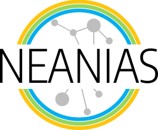NEANIAS and SANTORY projects confirmed their commitment to support each other in bringing forward a supportive ecosystem.
NEANIAS and SANTORY are two complementary projects both in the domain of Underwater research, Marine Technology, Machine Learning, Geosciences, and related technologies. NEANIAS is a focused Open Science project in the field of co-design and delivery of innovative thematic services, derived from state-of-the-art research assets and practices in three major sectors: Underwater research, Atmospheric research and Space research, each engaging multitudinous academic and business groups, numerous researchers, professionals and governmental entities.
On the other hand, SANTORY is a project that seeks to understand & mitigate future impacts of volcanic eruptions, landslides of hydrothermally weakened volcanic edifices, earthquakes & release of hazardous metals in water.
SANTORY is an ambitious, multi–disciplinary research project which seeks to provide solutions to understanding and mitigating future, potentially disastrous, impacts of explosive volcanic eruptions, landslides of hydrothermally weakened volcanic edifices, earthquakes (with probable consequent tsunamis), and the release of heavy and potentially hazardous metals in the water column. SANTORY will establish a cutting-edge seafloor observatory using innovative marine technology within the most-active submarine Mediterranean volcano, Kolumbo. It will build an open-access data hub using innovative visualization and virtual reality technologies to present the volcanic dynamics driving scientific knowledge advances and communicating hazards to the society in easy-to-understand ways. The outcomes of SANTORY will provide the impetus for much needed multidisciplinary collaboration in Greece and across the EU and will be a first step for understanding of such natural laboratories to underpin development of next-generation shallow volcanic seafloor observatories.
